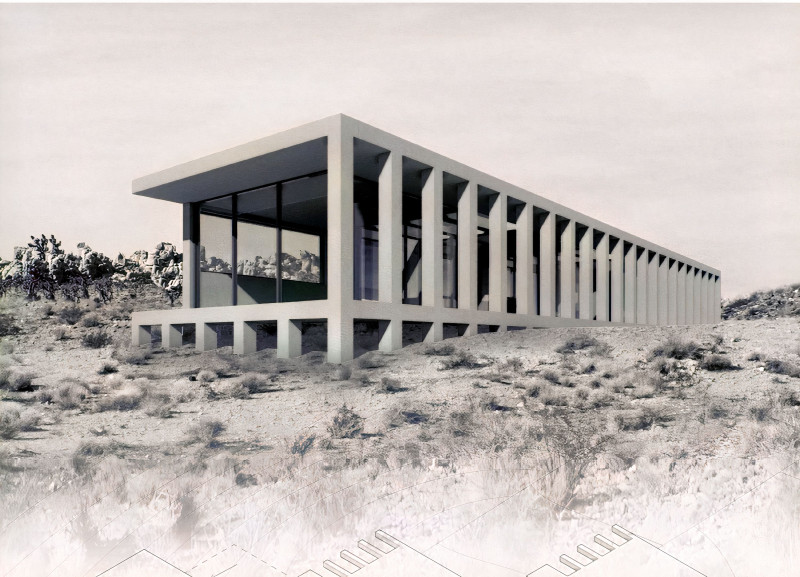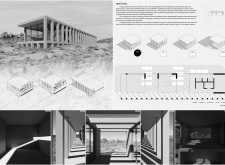5 key facts about this project
The design is set in the Southwestern region of the United States and aims to create a living space that fosters a deeper connection between individuals and their surroundings. By focusing on light and shadow, the home incorporates natural elements to guide occupants through their daily activities. The colonnade plays a central role in the design, serving as a clock that influences both the flow of space and the experiences within it.
Colonnade as Temporal Marker
The colonnade is a key feature, functioning as the house's primary clock. Shadows cast by this structure change throughout the day, offering a unique visual experience. It encourages inhabitants to engage with the rhythm of nature, fostering an awareness of time and the environment around them.
Courtyards for Isolation and Interaction
The layout includes two courtyards, which help to create separate areas within the home while encouraging outdoor interaction. These spaces provide a balance of privacy and openness. They serve as quiet retreats, allowing for moments of reflection while still connecting users to nature. This duality enhances the overall living experience.
Responsive Design to Natural Light
Light is thoughtfully integrated into the design to enhance the spatial experience. The home is oriented to capture daylight effectively, allowing it to shift throughout the day. This dynamic relationship with natural light encourages users to move through the space differently as the conditions change, enriching their daily routines.
Integration of Curtain Walls
Curtain walls are an important aspect, allowing shadows to spill into the interior spaces. This design choice creates visual connections between inside and outside. The walls bring in natural light while also creating depth in the living areas. As a result, inhabitants can feel the presence of the exterior environment as they navigate through their home.
The design ultimately fosters a strong connection with the surrounding landscape, where the balance of light and shadow actively shapes daily life within the spaces.



















































